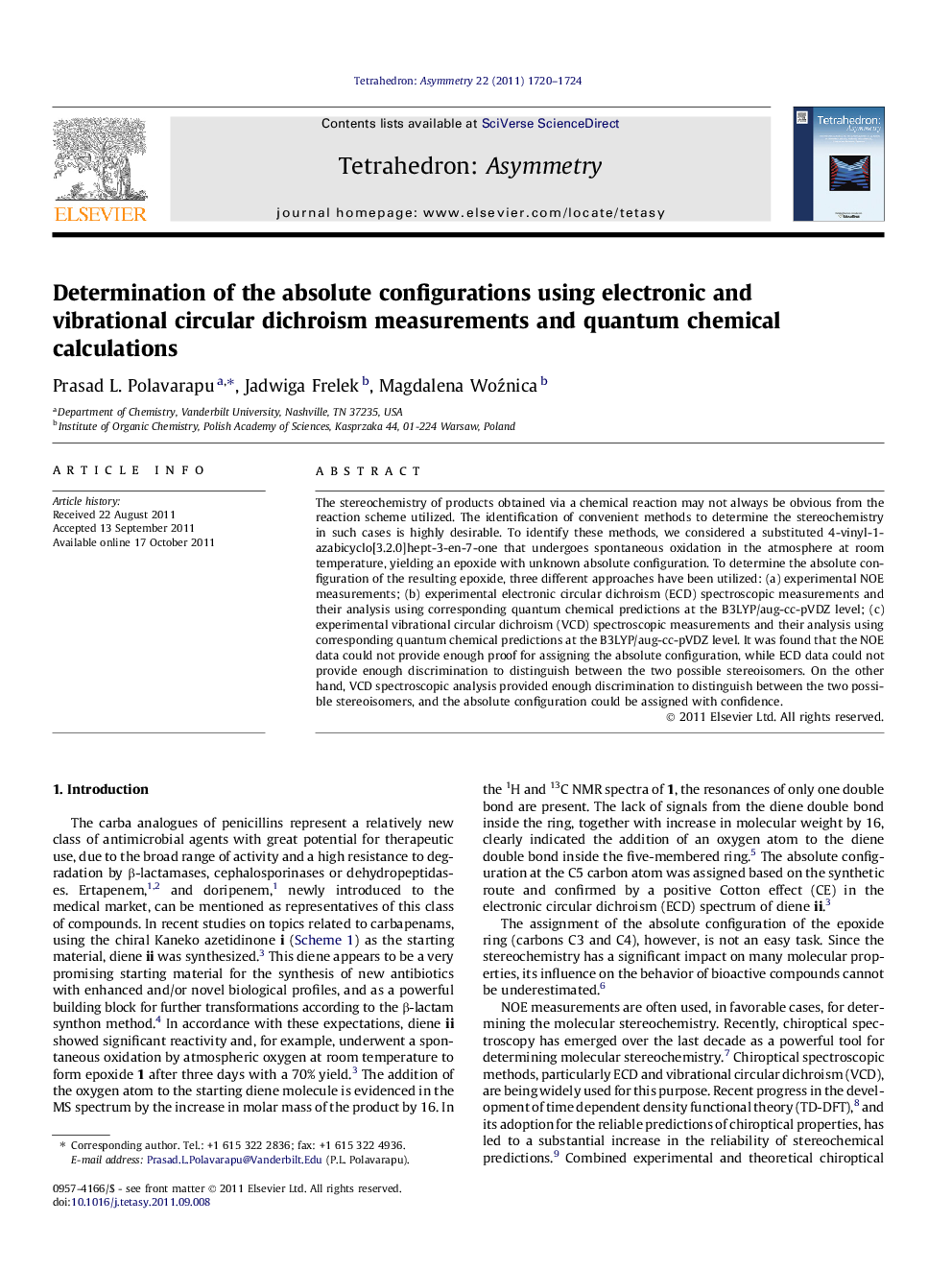| کد مقاله | کد نشریه | سال انتشار | مقاله انگلیسی | نسخه تمام متن |
|---|---|---|---|---|
| 1344364 | 1500363 | 2011 | 5 صفحه PDF | دانلود رایگان |

The stereochemistry of products obtained via a chemical reaction may not always be obvious from the reaction scheme utilized. The identification of convenient methods to determine the stereochemistry in such cases is highly desirable. To identify these methods, we considered a substituted 4-vinyl-1-azabicyclo[3.2.0]hept-3-en-7-one that undergoes spontaneous oxidation in the atmosphere at room temperature, yielding an epoxide with unknown absolute configuration. To determine the absolute configuration of the resulting epoxide, three different approaches have been utilized: (a) experimental NOE measurements; (b) experimental electronic circular dichroism (ECD) spectroscopic measurements and their analysis using corresponding quantum chemical predictions at the B3LYP/aug-cc-pVDZ level; (c) experimental vibrational circular dichroism (VCD) spectroscopic measurements and their analysis using corresponding quantum chemical predictions at the B3LYP/aug-cc-pVDZ level. It was found that the NOE data could not provide enough proof for assigning the absolute configuration, while ECD data could not provide enough discrimination to distinguish between the two possible stereoisomers. On the other hand, VCD spectroscopic analysis provided enough discrimination to distinguish between the two possible stereoisomers, and the absolute configuration could be assigned with confidence.
Vibrational circular dichroism spectroscopy is found to be a powerful method for deducing the outcome of stereochemical reactions.Figure optionsDownload as PowerPoint slide
8-[1-(tert-Butyl-dimethyl-silanyloxy)-ethyl]-2-vinyl-3-oxa-6-aza-tricyclo[4.2.0.02,4]octan-7-oneC16H27NO3Si[α]D = −0.65 (c 0.62, CH2Cl2)Source of chirality: (+)-Kaneko azetidinone dichroism (ECD and VCD)Absolute configuration: (3S,4R,5S,6S,9R)
Journal: Tetrahedron: Asymmetry - Volume 22, Issues 18–19, 15 October 2011, Pages 1720–1724